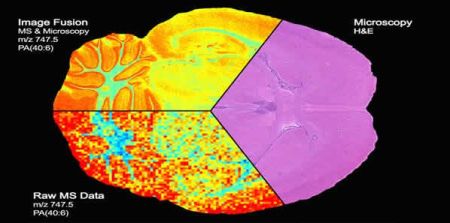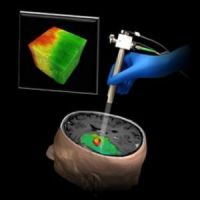Researchers at Vanderbilt University have achieved the first "image fusion" of mass spectrometry and microscopy. This could dramatically improve the diagnosis and treatment of cancer. The paper was published in the journal Nature Methods.
Microscopy yields high-resolution images of tissues but does not give molecular information. Mass spectrometry provides a precise accounting of proteins, lipids and other molecules but in a spatially coarse and pixelated manner. However, if you combine the best features of both imaging modalities, you can see the molecular make-up of tissues in high resolution.
Richard Caprioli, the Stanford Moore Professor of Biochemistry and director of the Mass Spectrometry Research Center and the lead author of the paper, believes this is phenomenal and could redefine surgical margin, the line between cancer cells and normal cells where the scalpel goes to remove the tumour.
The surgical margin is currently determined by histology but many cancers recur after surgery. A possible reason could be that what appear as normal cells could actually be cancer cells in the making.
According to said Douglas Sheeley, Sc.D., senior scientific officer in the National Institute of General Medical Sciences (NIGMS), "The application of image fusion approaches to the analysis of tissue sections by microscopy and mass spectrometry is a significant innovation that should change the way that these techniques are used together. It is an important step in the process of making mass spectrometry data accessible and truly useful for clinicians," he said.
The research team used regression analysis to map each pixel of mass spectrometry data onto the corresponding spot on the microscopy image to produce a new predicted image. The concept, explained by Caprioli, is similar to the line drawn between experimentally determined points in a standard curve where there are no real points between those that were measured but the line is predicted by previous experiments.
The image fusion project was led by Raf Van de Plas, Ph.D, a research assistant professor of Biochemistry and was co-authored by postdoctoral fellow Junhai Yang, Ph.D, and Jeffrey Spraggins, Ph.D, research assistant professor of Biochemistry. Last year Caprioli was honoured by the American Society for Mass Spectrometry for developing Imaging Mass Spectrometry (IMS) using matrix-assisted laser desorption/ionization (MALDI), a technique for visualising proteins, lipids and other molecules in cells and tissues.
Source: Vanderbilt University Medical Center
Image Credit: Vanderbilt University Medical Center
References:
Raf Van de Plas, Junhai Yang, Jeffrey Spraggins, Richard M Caprioli. 2015. Image fusion of mass spectrometry and microscopy: a multimodality paradigm for molecular tissue mapping. Nature Methods
Latest Articles
Imaging, image fusion, cancer cells, microscopy, mass spectrometry
Researchers at Vanderbilt University have achieved the first "image fusion" of mass spectrometry and microscopy. This could dramatically improve the diagno...



























